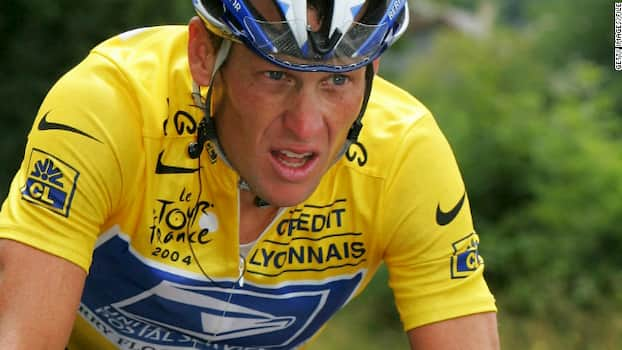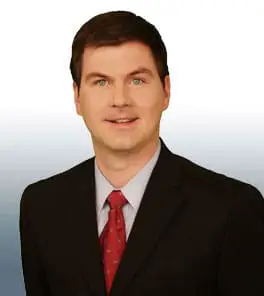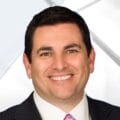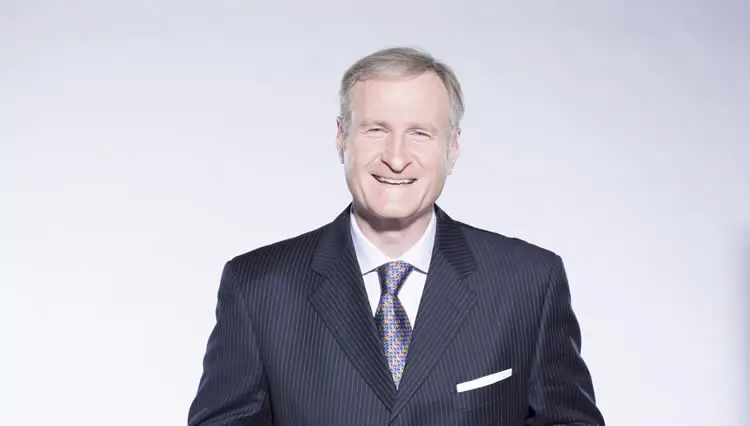Lance Armstrong Biography
Lance Armstrong (Lance Edward Armstrong born Lance Edward Gunderson) is an American former professional road racing cyclist. He is also an author and public speaker. He is famous for the biggest doping scandal in cycling history. He had been the subject of doping allegations ever since winning the 1999 Tour de France.
Armstrong began competing as a triathlete when he was just 16 years old. He was a national sprint-course triathlon champion in 1989 and 1990. In 1992, Armstrong began his career as a professional cyclist with the Motorola team. He had notable success between 1993 and 1996 with the World Championship in 1993, the Clásica de San Sebastián in 1995, Tour DuPont in 1995 and 1996.
Lance Armstrong began doping in late Spring of 1995. In 1996, he was diagnosed with a potentially fatal metastatic testicular cancer. After his recovery, he founded the Lance Armstrong Foundation (now the Livestrong Foundation) to assist other cancer survivors. In 1998, he returned to cycling.
He was a member of the US Postal/Discovery team between 1998 and 2005, when he won his Tour de France titles. He also won a bronze medal in the 2000 Summer Olympics. Towards the end of 2005, Armstrong retired from racing Tour de France. In January 2009, he returned to competitive cycling with the Astana team.
That year, Lance Armstrong finished third in the 2009 Tour de France. Between 2010 and 2011, he raced with Team Radio Shack, the UCI ProTeam he helped found. He retired for a second time in 2011.

In 2012, a United States Anti-Doping Agency (USADA) investigation concluded that Lance Armstrong had used performance-enhancing drugs over the course of his career. He was named as the ringleader of “the most sophisticated, professionalized and successful doping program that sport has ever seen.”
Lance Armstrong chose not to contest the charges, citing the potential toll on his family. This resulted to him being stripped of all of his achievements from August 1998 onward. These included his seven Tour de France titles. He also received a lifetime ban from all sports that follow the World Anti-Doping Code.
That marked the end of his competitive career. The International Cycling Union (UCI) upheld USADA’s decision. They decided that his stripped wins would not be allocated to other riders. In an interview later on, Armstrong confessed that some of the allegations were true. He declined to testify about the full extent of his use of the drugs.
It was an epic downfall of cycling’s star, once an idolized icon of millions around the globe. It stood out in the history of professional sports.
In April 2018, Armstrong settled a civil lawsuit with the United States Department of Justice and agreed to pay US$5 million to the U.S. Government. This was after whistleblower proceedings were commenced by Floyd Landis, a former team member. It was alleged that Armstrong violated his contract with the United States Postal Service. He committed fraud when he denied using performance-enhancing drugs.
Lance Armstrong Age
Lance Armstrong was born in Plano, Texas, United States of America. He was born on 18th September, 1971. He is 47 years old as of 2018.
Lance Armstrong Net Worth
The former professional road racing cyclist, Lance Armstrong, is a rich man. He currently has an approximated net worth of $ 50 million. Before being stripped his success he was filthy rich with a net worth of $125 million.
In 2012, a United States Anti-Doping Agency (USADA) investigation concluded that Armstrong had used performance-enhancing drugs over the course of his career. He was named as the ringleader of “the most sophisticated, professionalized and successful doping program that sport has ever seen.”
Lance Armstrong chose not to contest the charges, citing the potential toll on his family. This resulted to him being stripped of all of his achievements from August 1998 onward.
Lance Armstrong Wife | Anna Hansen Lance Armstrong
Just like his sporting career, Lance Armstrong love life has been with a lot of complications. He is currently dsating Anna Hansen. The two begun dating in the year 2008. Contrary to allegations that Armstrong could no longer have any other children, due to chemotherapy, the couple have two kids.
Before getting in a relationship with Anna, Lance Armstrong has been involved in other relationships before. He met Kristin Richard in June 1997. They married on May 1, 1998, and had three children. The couple however, divorced in 2003. Reasons behind their divorce are not clearly known.
That same year, Lance Armstrong began dating singer-songwriter Sheryl Crow. The couple announced their engagement in September 2005 and their split in February 2006. In March 2007, Armstrong began dating designer Tory Burch. They announced their breakup in October 2007.
Lance Armstrong Children
Armstrong is a father to three kids. He is their biological father. He got his first three kids with his first wife Kristin Richard. The pregnancies were made possible through sperm Armstrong banked three years earlier, before chemotherapy and surgery. At Armstrong’s request, his children flew to Paris for the Tour de France podium ceremony in 2005.
His son Luke helped his father hoist the trophy, while his daughters held the stuffed lion mascot and bouquet of yellow flowers. He has some other two kids with his current girlfriend Anna Hansen. Although it was believed that Armstrong could no l onger father children, due to having undergone chemotherapy for testicular cancer, his children were conceived naturally. He announced their arrival via twitter.
Lance Armstrong Today | Lance Armstrong 2019
Lance Armstrong admits that “The last six years in a lot of ways has really sucked,” he said. “It’s been terrible.” He was banned for life from competitive cycling in 2012 after the U.S. Anti-Doping Agency called him the mastermind of “the most sophisticated, professionalized, and successful doping program that sport has ever seen.”
Lance Armstrong has admitted that it was his fault and that he will spend the rest of his life trying to make it right. He is determined to move forward with his life after the scandal. “I don’t feel like a failure,” he said. “And I’ve never felt like a failure since then. Asked if he has been humbled by his fall from grace. “It’s funny,” he said. “I get both sides of it. I get people that say, ‘He hasn’t apologized enough,’ and then I get a lot of people that say, ‘Dude, stop apologizing.”’
Today he spends a lot of time with his wife Anna with whom he has two kids. He also spends time around his businesses. Armstrong owns a coffee shop in downtown Austin, Texas called “Juan Pelota Cafe”. The name is a joking reference to his testicular cancer, with the name “Juan” being considered by some a homophone for “one” and “Pelota” being the Spanish word for “ball”.
Out of the same building, Lance Armstrong owns and operates a bike shop named “Mellow Johnny’s”, after another nickname of his. The name is derived from the Tour term “maillot jaune”, which is French for yellow jersey, the jersey given to the leader of the general classification.
In 2001, Lance Armstrong provided funding to launch Wonders & Worries, a non-profit organization in Austin, Texas. The organisation provides counseling and support for children who have a parent with a serious or life-threatening disease. Armstrong owns a small share of Trek Bicycle Corporation.
Lance Armstrong Book
- Its not about the bike
- Every second counts
- The official tour de france
- The lance Armstrong performance program
- Echoes of Yesterday
- A sirvivors story
- Comeback 2.0
Lance Armstrong Movie | Lance Armstrong Film | Lance Armstrong Documentary
- Road to Paris (2001), documentary
- DodgeBall: A True Underdog Story (2004), cameo appearance
- You, Me and Dupree (2006), cameo appearance
- The Armstrong Lie (2013), documentary
- Stop at Nothing-The Lance Armstrong Story (2014), documentary
- The Program (2015), biographical drama film
- Tour de Pharmacy (2017), appearing as himself, acting as parody of an anonymous source
Lance Armstrong Quotes
Below is a small collection of some of Lance Armstrong quotes;
- Pain is temporary. It may last a minute, or an hour, or a day, or a year, but eventually it will subside and something else will take its place. If I quit, however, it lasts forever.
- Two things scare me. The first is getting hurt. But that’s not nearly as scary as the second, which is losing.
- If you worried about falling off the bike, you’d never get on.
- Pain is temporary. Quitting lasts forever.
- If children have the ability to ignore all odds and percentages, then maybe we can all learn from them. When you think about it, what other choice is there but to hope? We have two options, medically and emotionally: give up, or Fight Like Hell.
- There comes a point in every man’s life when he has to say: ‘Enough is enough.’
- Portland, Oregon won’t build a mile of road without a mile of bike path. You can commute there, even with that weather, all the time.
Lance Armstrong Interview | Lance Armstrong Podcast
Q: We touched briefly on some of your thoughts about how to fix, strengthen, and diversify the sport of professional road cycling. But can you talk in more detail about some of the changes that come to mind which you think could help promote better fan interest and excitement around the sport?
Lance Armstrong: I think there are a whole lot of things that could be changed in pro cycling to make it more interesting, more exciting, and more accessible to a whole lot more people. And a lot of them are pretty easy to implement — and won’t generate a lot of controversy.
Probably, first of all, there need to be some significant changes in the racing schedules and event formats. I know I’m not the first one to suggest some of these ideas, but it seems like a lot of them have never really gotten serious attention in the cycling world. This includes things like shorter stage routes, fewer boring transition stages in the grand tours, and more circuit-type races in urban locales. Races which have a greater component of circuits can address at least a couple of different problems.
Q: Particularly in terms of rebuilding American interest in cycling — is there some way to generate a bigger audience even if you don’t have some kind of big star or celebrity reigning at the time?
Lance Armstrong: Yeah, it obviously helps to promote interest in sports or any kind of event, if there is a key individual or star for people to focus on. I mean, look at what happened at Torrey Pines in January — Tiger showed up, and even as the 400th ranked golfer in the world, he brought in a huge crowd. Or look at the last U.S. Open — even though an American [Sloane Stephens] won, her name is hardly known outside of the sport. How many people watched that? Or like in cycling, the French people always pay attention to cycling, but I imagine it will get quite a bit bigger if Bardet starts to look like he might be able to win the Tour.
Q: Let’s switch gears a little bit. Lately, it seems like you have been a pretty outspoken advocate of a stronger athletes’ union. How could a more powerful riders’ union change or strengthen pro cycling?
Lance Armstrong: I have always believed that the sport of cycling needs a stronger union. It could help the overall sport in a lot of ways — and not just the riders. As I mentioned earlier, if the riders had more skin in the game, it could really work to change their collective behavior. If the riders got a share of the revenues or profits of the sport — if they felt like they were business partners and they shared in the financial upsides or downsides of the sport, they would probably behave themselves better. The peloton would police itself better.
I think there is a real opportunity to exploit the power of peer pressure in a much more positive way — sort of like, if we’re all in this together, then if someone cheats, it hurts all of us. During my era, the peer pressure was completely in the other direction — if a few people started cheating, then more and more people felt like they had to too, in order to survive. And before long, the whole peloton was doping. This peer pressure could be turned around and used in a much more positive sense if the riders had more power. If it was a situation where everyone started off clean and then someone started to cheat, there would be a big pressure within the peloton to run the cheater off — to straighten him out. Just the opposite of how it used to work. And listen, there are no secrets in the peloton — we all knew what was happening, we all knew what each other was doing.
Q: There seems to be a general consensus today that the doping problems in pro cycling have been significantly cleaned up, or that the problem is not nearly as bad or as prevalent as they were during your time. But we continue to have perhaps lesser controversies, like the one currently circling around Chris Froome. Given your history and transgressions, what is your view on doping issues in cycling now?
Lance Armstrong: Well, given my past, I realize that I don’t have a lot of credibility on this subject, certainly with most people, and so I am kind of hesitant of wading into this. But if you’re asking, I will give you my opinion.
First of all, it seems like we have to look at this from the bigger perspective. Cycling really does get a bad rap in this regard, I think. Yes, I know that cycling has had a lot of problems historically and that our sport was one of the original drivers for anti-doping, and WADA, etc. But let’s look at it from the bigger picture. Cycling is at least trying to manage this issue, while a lot of other sports are just trying to sweep the issue under the rug.
Q: There has been quite a bit of press recently and speculation about how you are making a big push to get back into the sport, to play a more major role in cycling going forward. Is that true?
Lance Armstrong: I don’t really feel the need to get back into the sport in any major way. It will be nice to finally get this federal trial behind me, but I don’t have any intention of trying to appeal my ban. I am done hiring lawyers. I am not seeking some big role in pro cycling or anything. What I have now is enough. I already participate in cycling to the extent I want to. I covered the Tour last year, six million people listened to me. That’s good enough for me! In my podcasts, I tried to be open-minded and transparent, and I think that is what people appreciated. And you know, in that regard, I don’t really feel like I am competing against CyclingNews or VeloNews. My competitors are more outfits like Deadspin or Flo Sports. Content that is raw and uncensored — the kind of thing that the younger generation likes to listen to.
About InformationCradle Editorial Staff
This Article is produced by InformationCradle Editorial Staff which is a team of expert writers and editors led by Josphat Gachie and trusted by millions of readers worldwide.
We endeavor to keep our content True, Accurate, Correct, Original and Up to Date. For complain, correction or an update, please send us an email to informationcradle@gmail.com. We promise to take corrective measures to the best of our abilities.






